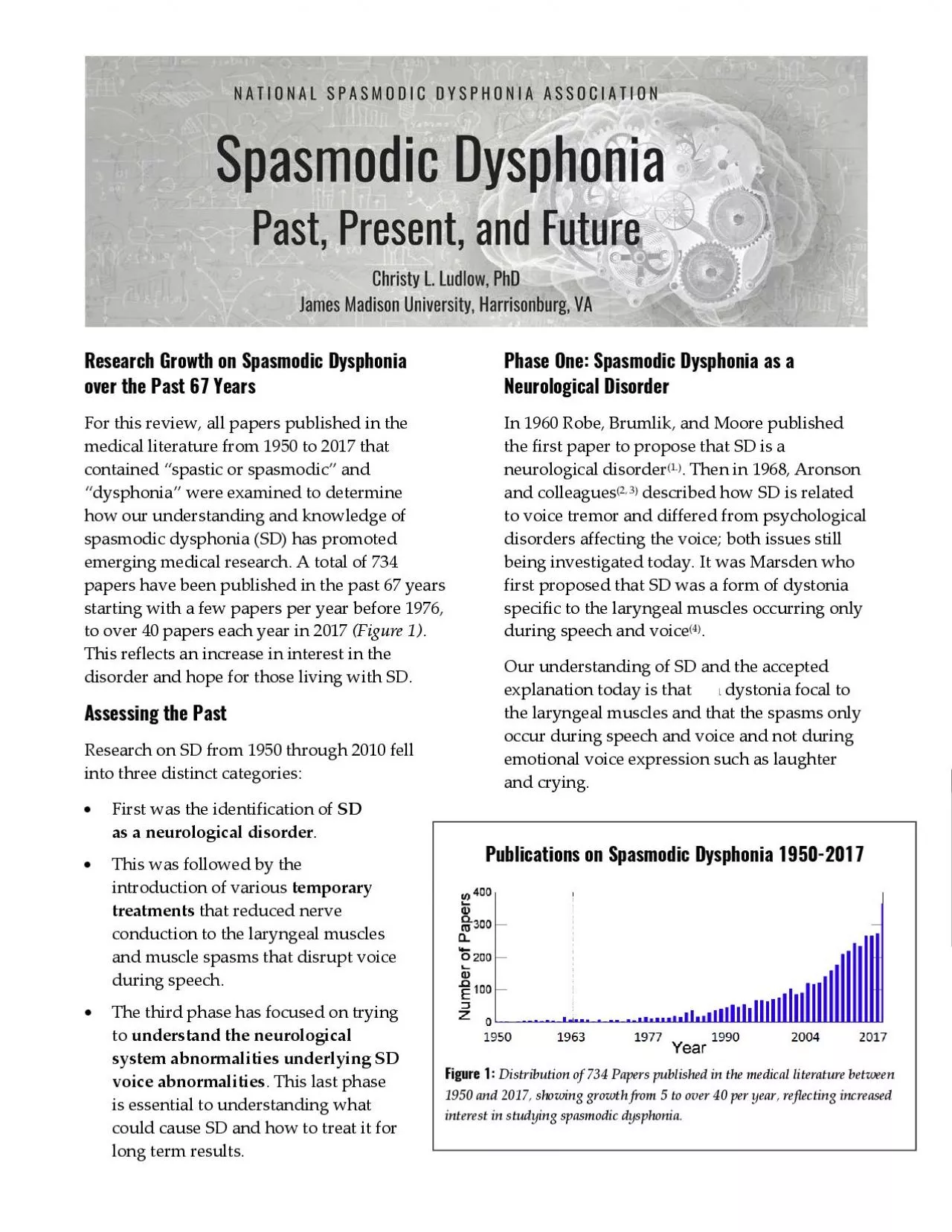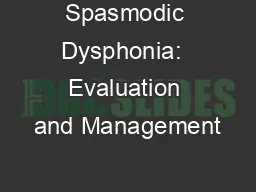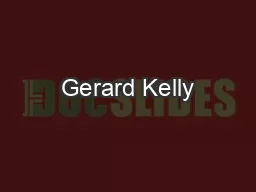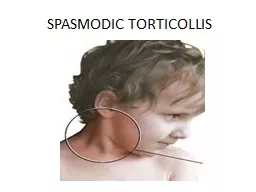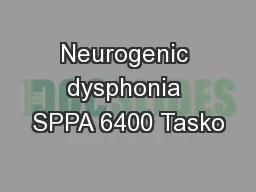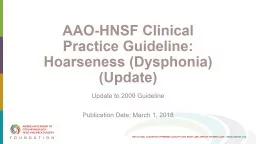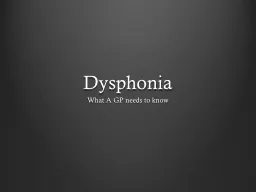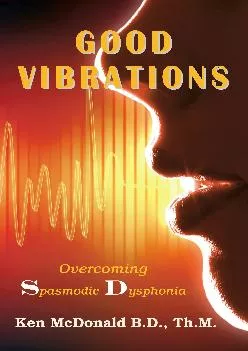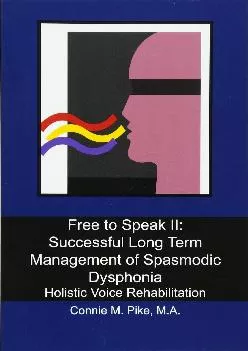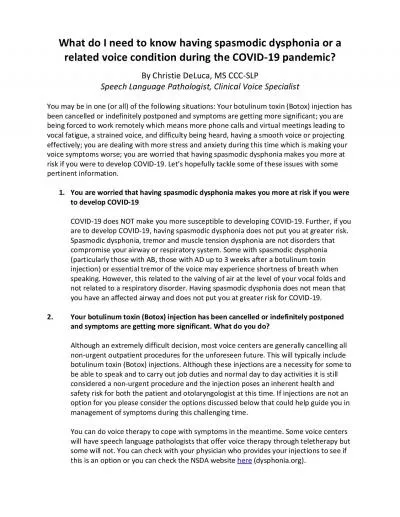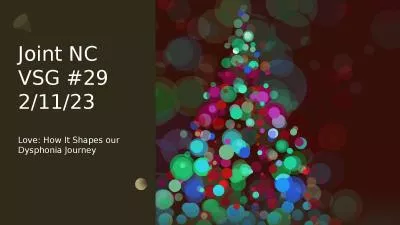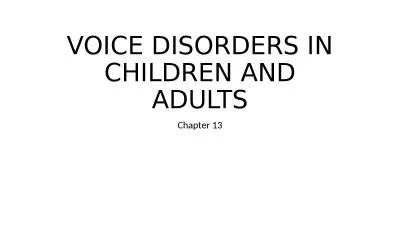PDF-Research Growth on Spasmodic Dysphonia overthe ast67 YearsFor this rev
Author : fiona | Published Date : 2022-09-06
Publications on Spasmodic Dysphonia 19502017Figure 1Distribution of 734 Papers published in the medical literature between 1950 and 2017 showing growth from 5 to
Presentation Embed Code
Download Presentation
Download Presentation The PPT/PDF document "Research Growth on Spasmodic Dysphonia o..." is the property of its rightful owner. Permission is granted to download and print the materials on this website for personal, non-commercial use only, and to display it on your personal computer provided you do not modify the materials and that you retain all copyright notices contained in the materials. By downloading content from our website, you accept the terms of this agreement.
Research Growth on Spasmodic Dysphonia overthe ast67 YearsFor this rev: Transcript
Download Rules Of Document
"Research Growth on Spasmodic Dysphonia overthe ast67 YearsFor this rev"The content belongs to its owner. You may download and print it for personal use, without modification, and keep all copyright notices. By downloading, you agree to these terms.
Related Documents

